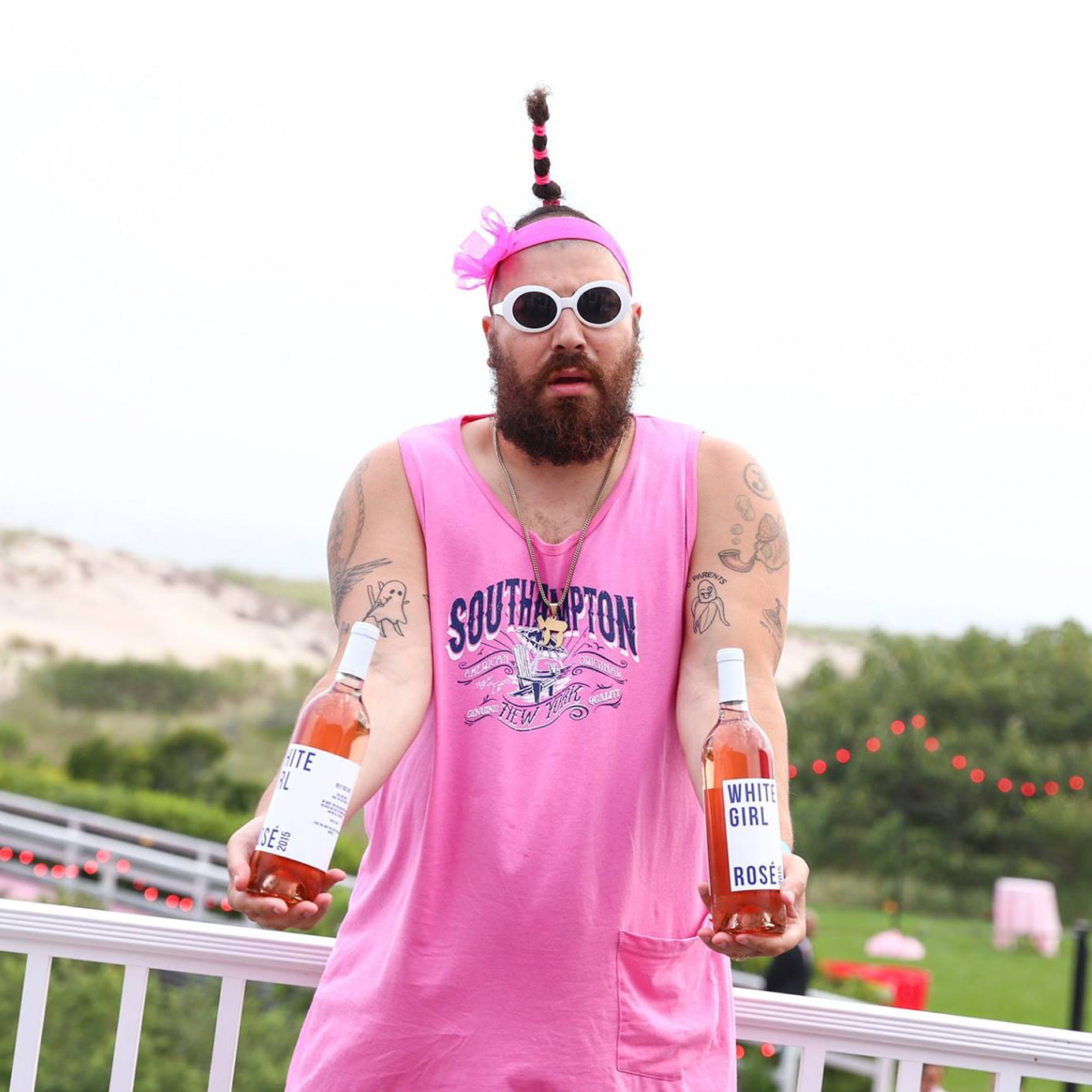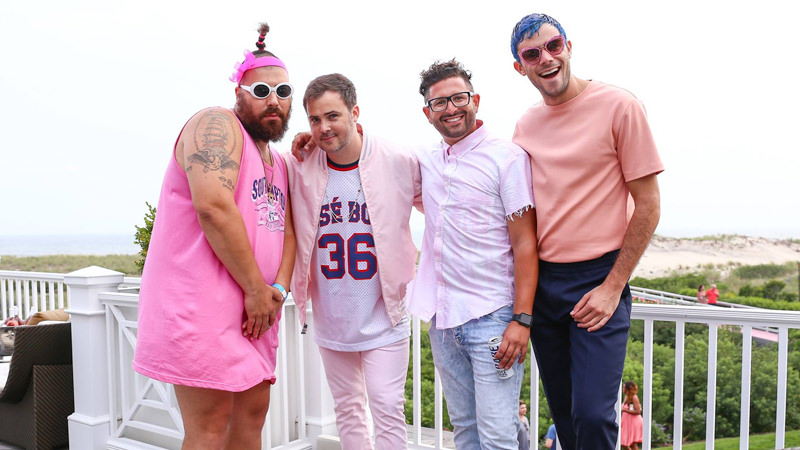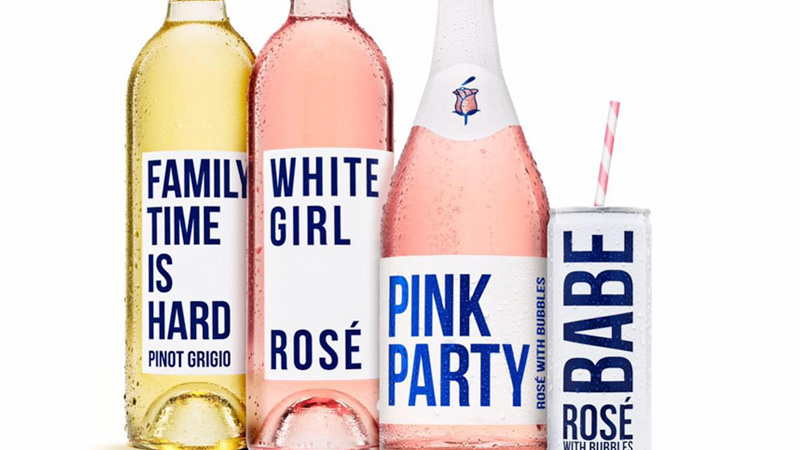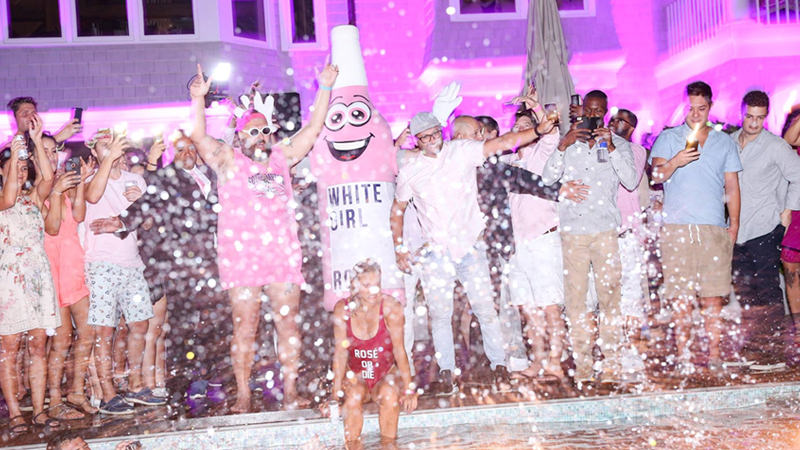
Rosé isn’t just a drink anymore. It’s a lifestyle of leisurely, day-to-night decadence. It’s easy-drinking, reliable. An open bottle of rosé means everything’s right with the world, even if that’s not really the case. Or especially if that’s not really the case.
Few have capitalized on the rosé-as-a-lifestyle trend better than Swish Beverages, the company behind White Girl Rosé. Helmed by three social media experts and a talent manager, theirs is winemaking for the Instagram age. White Girl Rosé has arrived, and it isn’t a matter of for better or for worse. Like everything in life, White Girl Rosé is about timing.
*
Alarmist Washington Post and New York Times push notifications ping my phone as I climb the stairs to the modest White Girl Rosé offices, which are located in Chelsea above the Scott Disick-frequented nightclub 1Oak. My interview with the White Girl Rosé founders comes a few days after the news that North Korea has produced a miniaturized nuclear warhead, and President Trump’s subsequent “fire and fury” comments. My husband asks if we should buy potassium iodide anti-nuclear radiation pills. It’s only been 25 months since Swish Beverages launched in July of 2015, but that feels like a lifetime ago.
White Girl Rosé is a pinkest-of-the-pink blend of Sauvignon Blanc and Zinfandel. It’s the brainchild of Josh Ostrovsky, a.k.a. The Fat Jew — a self-deprecating comedian who rose to fame on Instagram — and three other men, Alexander Ferzan and brothers David Oliver Cohen and Tanner Cohen. (Disclosure: Ostrovsky and my husband went to college together.)
David and Tanner came to the company with their own social-media bona fides; the duo (along with a female founder, Lara Schoenhals, who has since gone her separate way) is responsible for the creation of “White Girl” Babe Walker. Born as a Twitter character, Babe Walker is now the subject of a series of books and, soon, a film with Lionsgate. Alexander Ferzan, meanwhile, is The Fat Jew’s manager.
The partners have since launched three other wines under the Swish Beverages umbrella: Babe, a can of sparkling rosé; Family Time is Hard, a Pinot Grigio; and Pink Party, a bottle of sparkling rosé. Swish is currently sold in 23 states across the country and the company says it will be in seven more by year’s end.
The guys knew from the beginning that they wanted to launch an alcohol product, but the liquor market was saturated. Rosé, as they explain, was a wine without a wine culture built around it — a wide-open space. And its consumption was on the upswing.
“If you are youngish and urbanish and drinking tonight, it’s very possible you’re drinking rosé,” writes Sarah Miller for Eater. “This is more likely if you are a woman, according to the wine industry, which claims that women are driving rosé sales, though men drink rosé too — a phenomenon that has been labeled ‘brosé.’” The “rosé bro” is, according to GQ, “inaugurating a freer, more egalitarian world of gender-fluid beverage consumption.” That a fuss has been kicked up over these brave brosé trailblazers makes it clear: No matter who’s drinking it, pink wine is girly.
White Girl Rosé emerged with a smirk, riding in to quench a seemingly bottomless rosé thirst that had resulted in summer shortages. As Ostrovsky told Downtown Magazine, “People were running through the streets [of the Hamptons], trying to hoard every last drop they could get their hands on. We decided at that moment, that we would never allow such a tragedy to occur again. Not on our watch.”
They thought people would buy White Girl Rosé as a gag, but soon after launch, realized it was a viable business. “It was going to be a momentary thing,” says Ostrovsky. “We were going to sell it to women in the Hamptons that we knew with like, rhinoplasty.”
The quartet set out to exceed expectations, anticipating a critical reception from consumers and the press. “We put a lot of time and effort into the actual taste and color and product,” says David Cohen. “We talked about the glass and we learned about punts and flint and if we wanted a cork or a screw top. Every review in the beginning was like, This is not that bad. This is pretty good.” Says Ostrovsky, “Our wine is just straight-up better than you think it will be.”
Working with a winery in California, they put in an initial order for 800 cases and ended up quadrupling it (they’ve since switched to O’Neill).
Their success is a case study in the power of social media. “Half of every experience now is the photo you are getting out of it and like, letting people that you went to Jewish summer camp with know that you are living your best life,” says Ostrovsky. “A lot of wine tastes good in you, but our wine looks good on you. And that’s part of the human experience, for better or for worse. Cause it’s kind of the worst thing I’ve ever said and the best thing I’ve ever said.”
The team’s social media prowess — 15 million followers combined, Swish press materials advertise — meant that the wine, with its graphic, easy-to-read label, instantly seemed to be everywhere. According to Cohen, it was “the most-photographed alcohol product on Instagram” the summer of its release.
*
The Swish voice and ethos began as a hybrid of two identities: the Fat Jew and prototypical “White Girl” Babe Walker. As David Cohen tells Bloomberg, “White Girl Problems is really more of a platform from which we can all stand and air our grievances … you don’t have to be a white person, or a girl, to have a white girl problem.”
Ostrovsky echoes this, saying that “White Girl” is, “a state of mind … All guys, I think, have a little bit of white girl in them, and I think they should embrace it.” According to the Babe Walker Twitter feed, such problems include, “being too tired to go to the Hamptons,” “having a body,” and “thinking about my hair.”
“It was something that we feel everyone can laugh at, whether it makes you cringe or not,” Tanner Cohen says. That they’ve been able to bottle this caricature and sell it to the very people they’re poking fun at isn’t all that surprising.
Not everyone’s a fan: As Schoenhals subtweeted only a few months ago, “Do you think it’s gross when male-owned brands co-opt a female experience to sell women products that make fun of them, or is that just me?” “In an economy where the idea of a woman is often more commercially appealing than the actual presence of one, it is seemingly a natural development that the White Girl brand is now run by a group of men,” wrote Joanna Rothkopf for Jezebel.
In response to the criticism, Tanner Cohen says, “We’re conscious that we’re men, and we make a product that has the word ‘girl’ in it, and has to do with race, but the response and the culture around our product has so far been positive.”
—
This summer, for the second year in a row, Swish threw a massive, rosé-fueled event called the Pink Party. It took place on a boat on the Hudson River, Diplo performed, and guests (including Kardashian friend Jonathan Cheban and Real Housewives of both New York and New Jersey) showed up in pink apparel. Everyone was handed a bottle of rosé with an oversize straw upon boarding.
It was a “seminal, this-is-who-we-are-right-now party,” says David. (Diplo is an investor in the brand, and a friend.) “It’s a lot of pressure to make a lot of memories, to make it really over the top and actually really whimsical and fantastic,” says Josh.
The Pink Party speaks to the core tenet of the Swish ethos, which boils down to: have fun. When asked about whether the presidential election changed their business, they say that if anything, it’s helped.
“It’s a time when, if you need a break, we’re here to have a really good time,” says Ostrovsky. “Because shit is so fucking intense. The internet is nonstop. There’s a nuke coming straight at us. What do you want to be drinking when the nuke is coming straight at you?”
Swish wants you to have a good time morning, noon, or night, year-round. Their next release, a party-friendly Babe can called Grigio With Bubbles, is slated for the beginning of 2018. They’ve also discussed doing a red to complement their current seasonal holiday white, Family Time is Hard. But, “I think you can also drink rosé pretty much whenever,” says Ostrovsky. “Pop a bottle, you’re the real MVP.”
“You don’t even need to drink it,” says Tanner Cohen. “Pop it, pour it out, spray it on something.” Just don’t forget to Instagram it.



